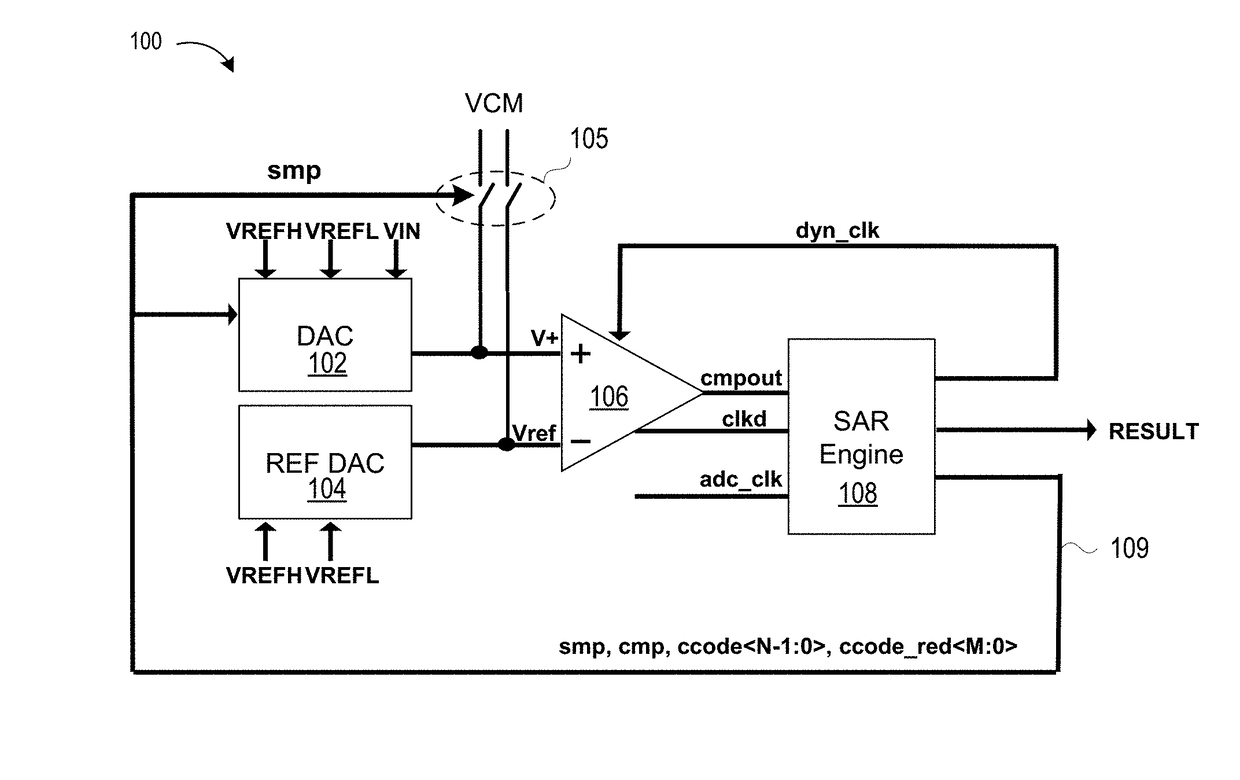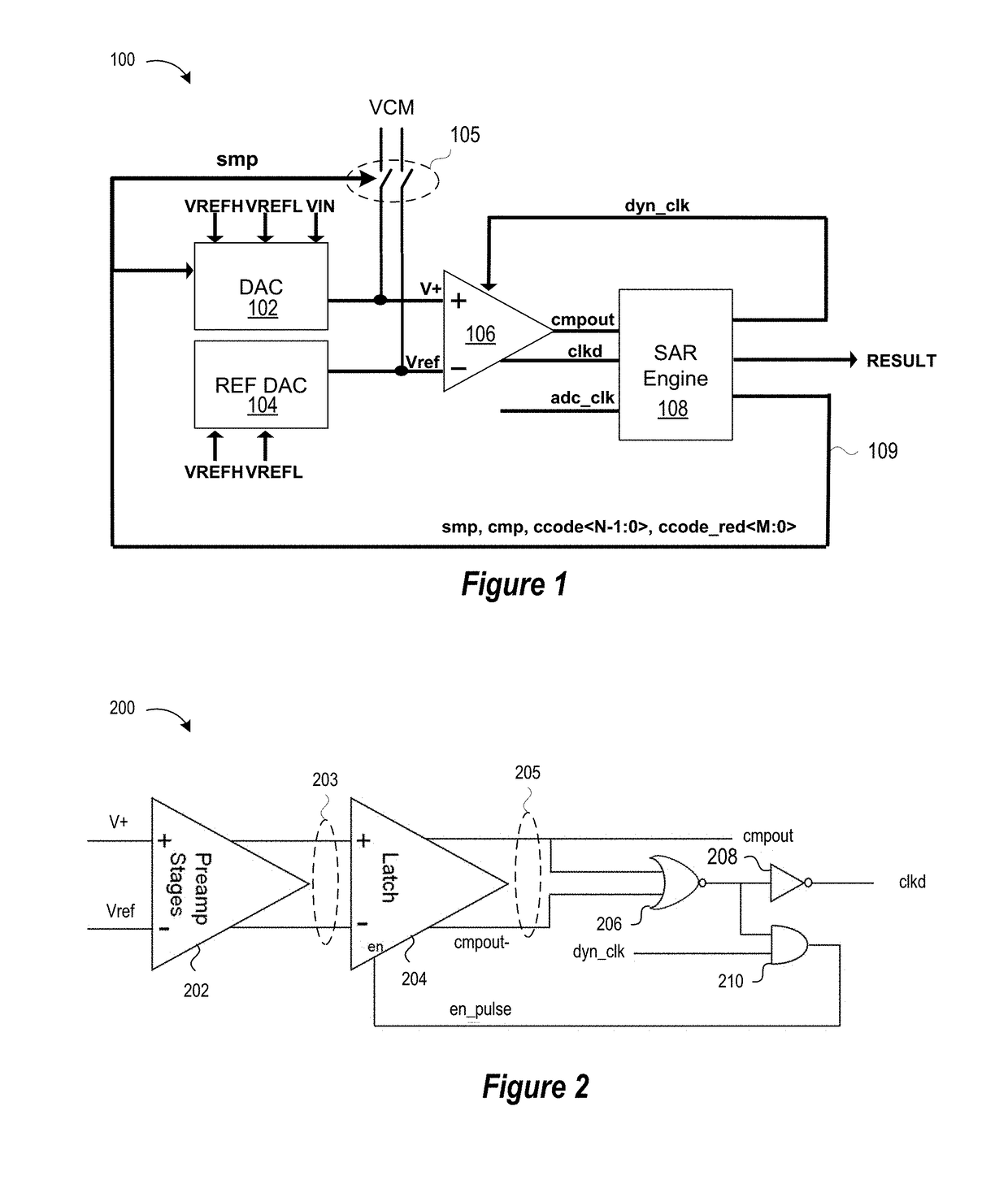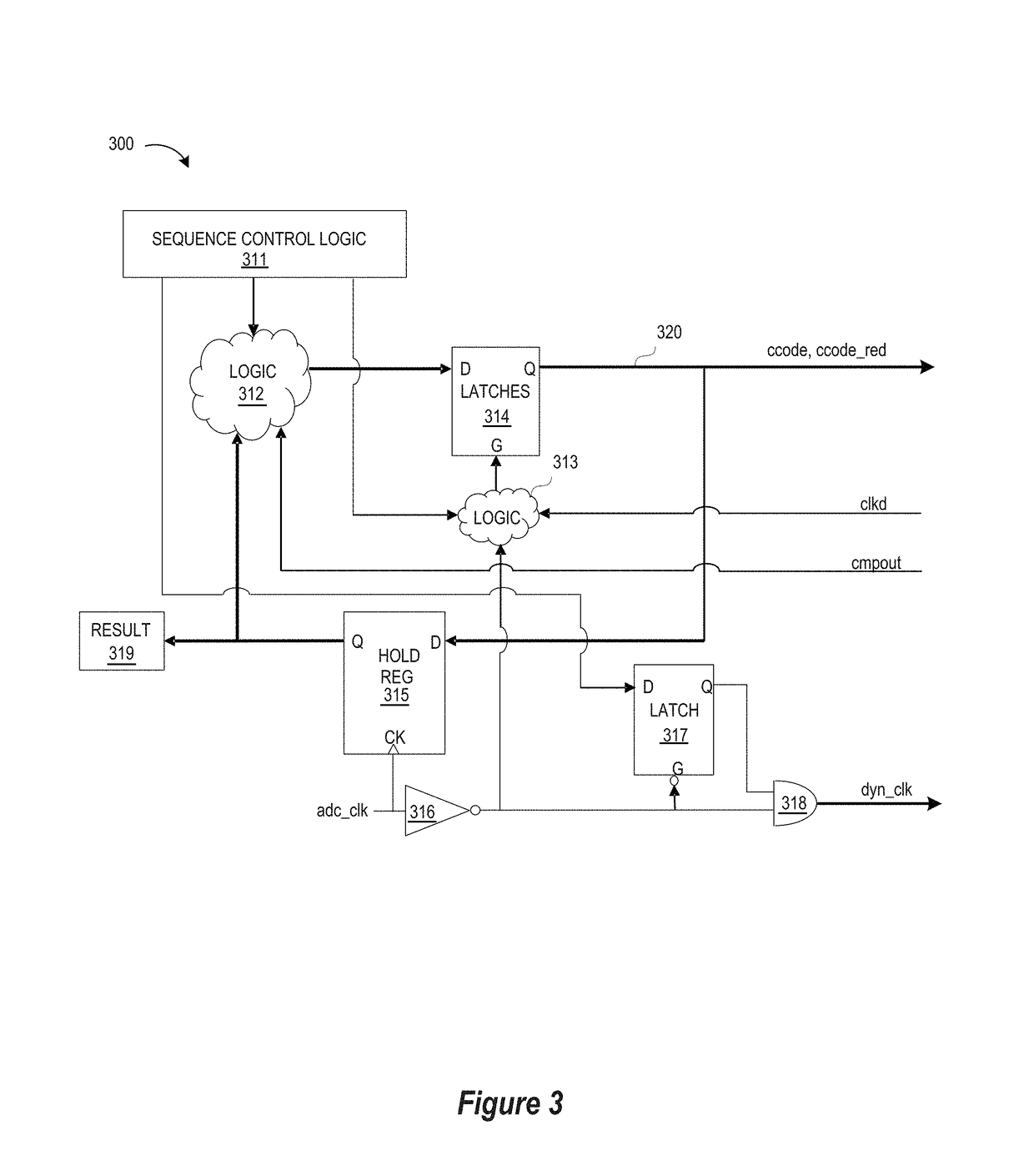Partially asynchronous clock scheme for SAR ADC
a synchronous clock and adc technology, applied in the field of electrical circuitry for data conversion, can solve the problems of reducing the overall speed of data conversion operations, difficult to optimize the time of compare vs dac settling without duty cycle adjustments or higher frequency clocks, and designing this delay adds power and complexity
- Summary
- Abstract
- Description
- Claims
- Application Information
AI Technical Summary
Benefits of technology
Problems solved by technology
Method used
Image
Examples
Embodiment Construction
[0014]A system, apparatus, and methodology are described for providing a partially asynchronous clocking scheme in an SAR ADC which uses asynchronous compare times within a fixed period for the “compare time plus DAC settling time” to increase the ADC conversion speed without requiring analog delay circuitry. In selected embodiments, the asynchronous compare times are controlled with a clocking scheme which uses a synchronous comparator input clock (e.g., dyn_clk) to end the settling time and initiate the compare timing and uses asynchronous self-generated clock edges (e.g., clkd) to end the compare timing and begin the settling time of the next bit, thereby adjustably controlling the settling and comparison timing during each successive approximation phase while maintaining a fixed period for the “compare time plus DAC settling time.” In particular, a disclosed synchronous ADC input clock edge begins each compare phase (and ends the preceding settling phase) and an asynchronous, se...
PUM
 Login to View More
Login to View More Abstract
Description
Claims
Application Information
 Login to View More
Login to View More - R&D Engineer
- R&D Manager
- IP Professional
- Industry Leading Data Capabilities
- Powerful AI technology
- Patent DNA Extraction
Browse by: Latest US Patents, China's latest patents, Technical Efficacy Thesaurus, Application Domain, Technology Topic, Popular Technical Reports.
© 2024 PatSnap. All rights reserved.Legal|Privacy policy|Modern Slavery Act Transparency Statement|Sitemap|About US| Contact US: help@patsnap.com










